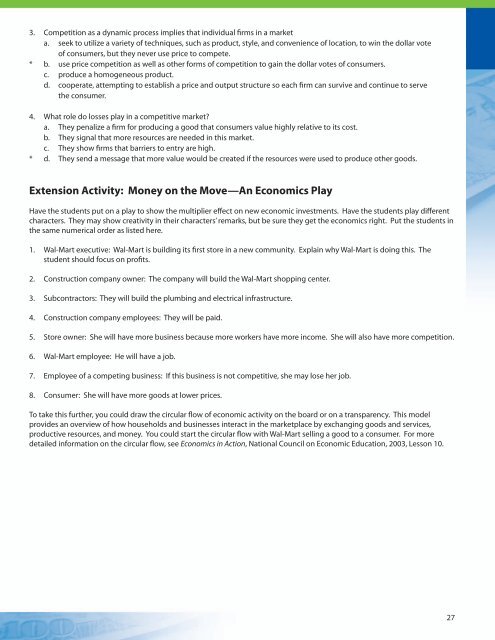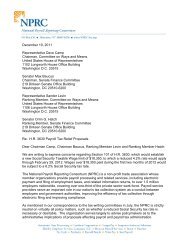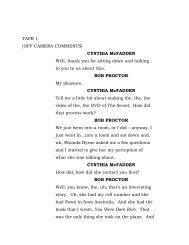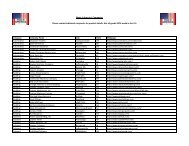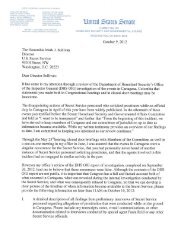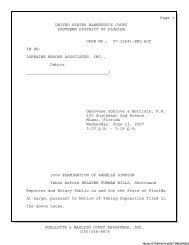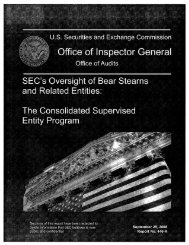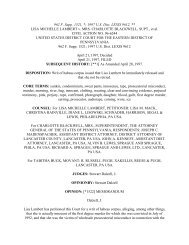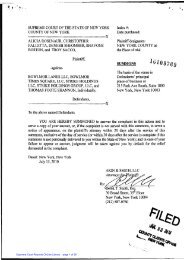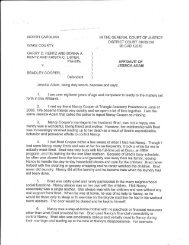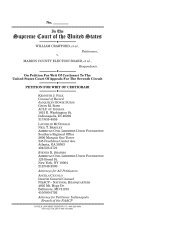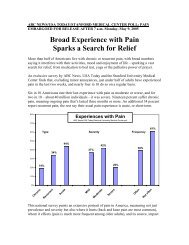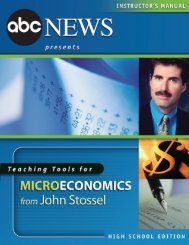to download the Microeconomics teachers guide - ABC News
to download the Microeconomics teachers guide - ABC News
to download the Microeconomics teachers guide - ABC News
You also want an ePaper? Increase the reach of your titles
YUMPU automatically turns print PDFs into web optimized ePapers that Google loves.
3. Competition as a dynamic process implies that individual firms in a market<br />
a. seek <strong>to</strong> utilize a variety of techniques, such as product, style, and convenience of location, <strong>to</strong> win <strong>the</strong> dollar vote<br />
of consumers, but <strong>the</strong>y never use price <strong>to</strong> compete.<br />
* b. use price competition as well as o<strong>the</strong>r forms of competition <strong>to</strong> gain <strong>the</strong> dollar votes of consumers.<br />
c. produce a homogeneous product.<br />
d. cooperate, attempting <strong>to</strong> establish a price and output structure so each firm can survive and continue <strong>to</strong> serve<br />
<strong>the</strong> consumer.<br />
4. What role do losses play in a competitive market?<br />
a. They penalize a firm for producing a good that consumers value highly relative <strong>to</strong> its cost.<br />
b. They signal that more resources are needed in this market.<br />
c. They show firms that barriers <strong>to</strong> entry are high.<br />
* d. They send a message that more value would be created if <strong>the</strong> resources were used <strong>to</strong> produce o<strong>the</strong>r goods.<br />
Extension Activity: Money on <strong>the</strong> Move—An Economics Play<br />
Have <strong>the</strong> students put on a play <strong>to</strong> show <strong>the</strong> multiplier effect on new economic investments. Have <strong>the</strong> students play different<br />
characters. They may show creativity in <strong>the</strong>ir characters’ remarks, but be sure <strong>the</strong>y get <strong>the</strong> economics right. Put <strong>the</strong> students in<br />
<strong>the</strong> same numerical order as listed here.<br />
1. Wal-Mart executive: Wal-Mart is building its first s<strong>to</strong>re in a new community. Explain why Wal-Mart is doing this. The<br />
student should focus on profits.<br />
2. Construction company owner: The company will build <strong>the</strong> Wal-Mart shopping center.<br />
3. Subcontrac<strong>to</strong>rs: They will build <strong>the</strong> plumbing and electrical infrastructure.<br />
4. Construction company employees: They will be paid.<br />
5. S<strong>to</strong>re owner: She will have more business because more workers have more income. She will also have more competition.<br />
6. Wal-Mart employee: He will have a job.<br />
7. Employee of a competing business: If this business is not competitive, she may lose her job.<br />
8. Consumer: She will have more goods at lower prices.<br />
To take this fur<strong>the</strong>r, you could draw <strong>the</strong> circular flow of economic activity on <strong>the</strong> board or on a transparency. This model<br />
provides an overview of how households and businesses interact in <strong>the</strong> marketplace by exchanging goods and services,<br />
productive resources, and money. You could start <strong>the</strong> circular flow with Wal-Mart selling a good <strong>to</strong> a consumer. For more<br />
detailed information on <strong>the</strong> circular flow, see Economics in Action, National Council on Economic Education, 2003, Lesson 10.<br />
27


